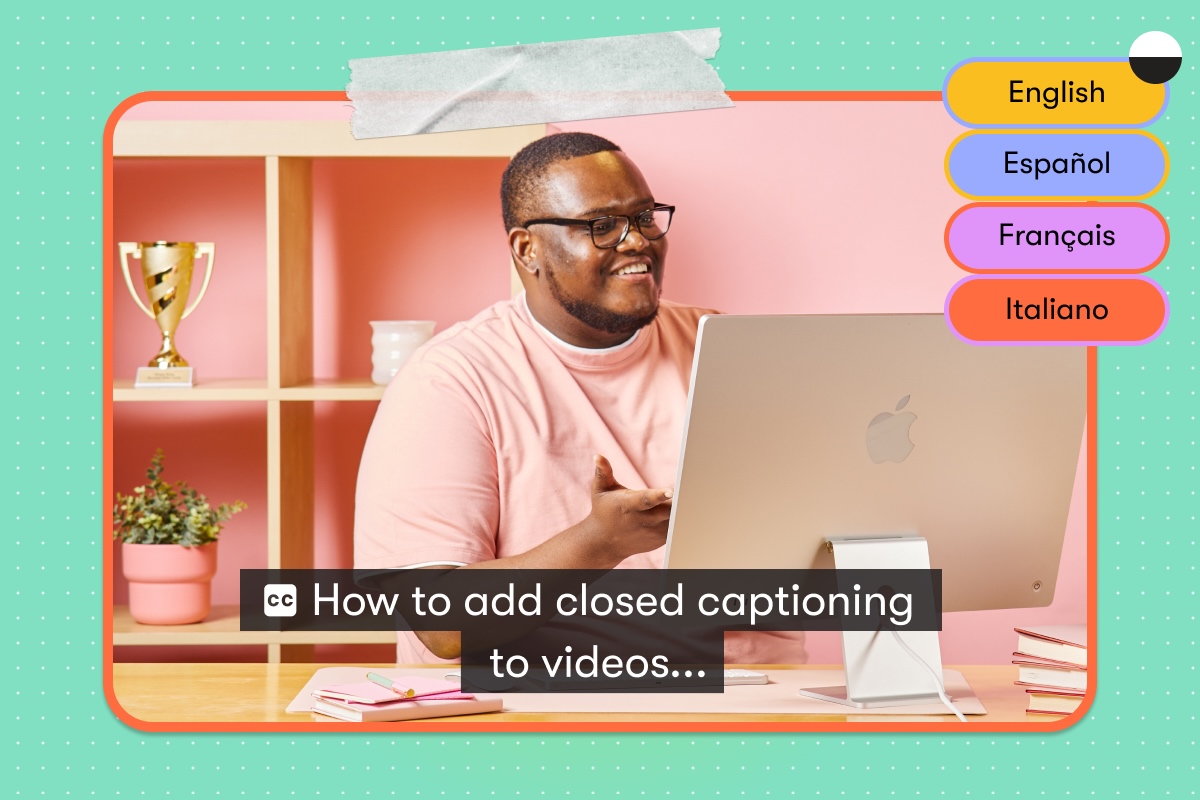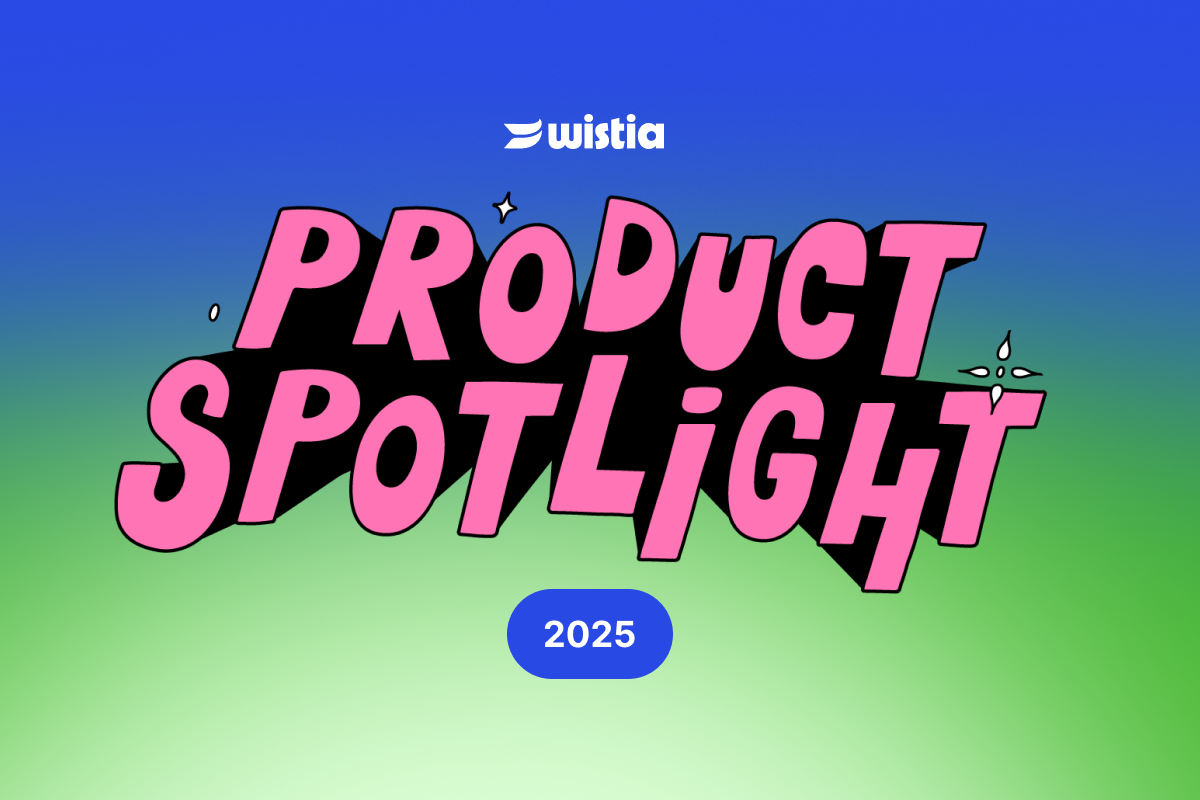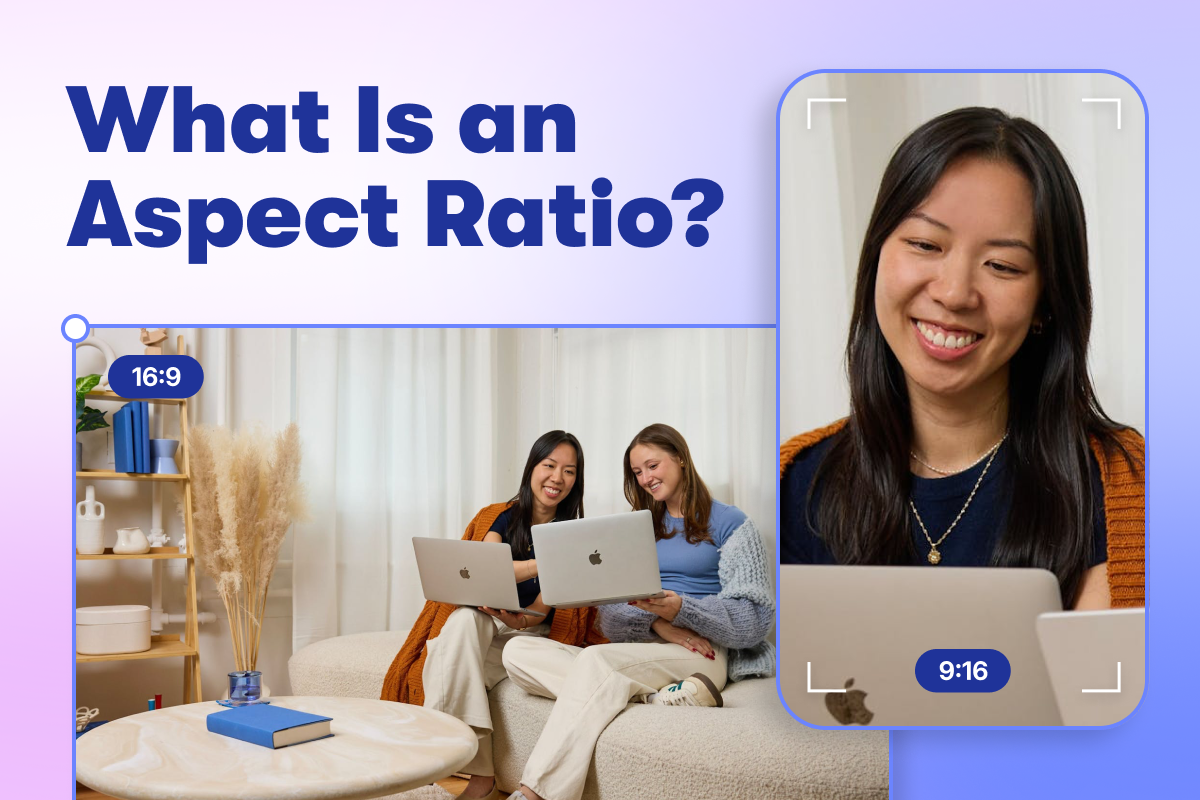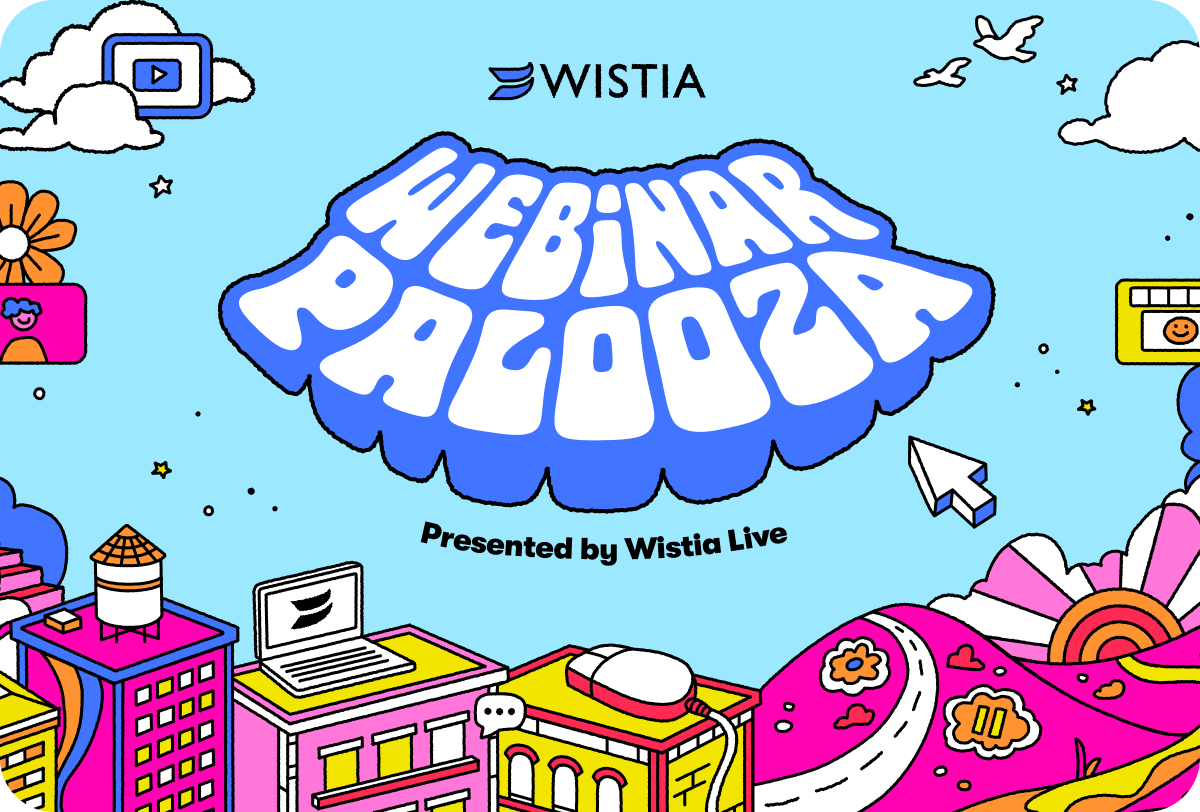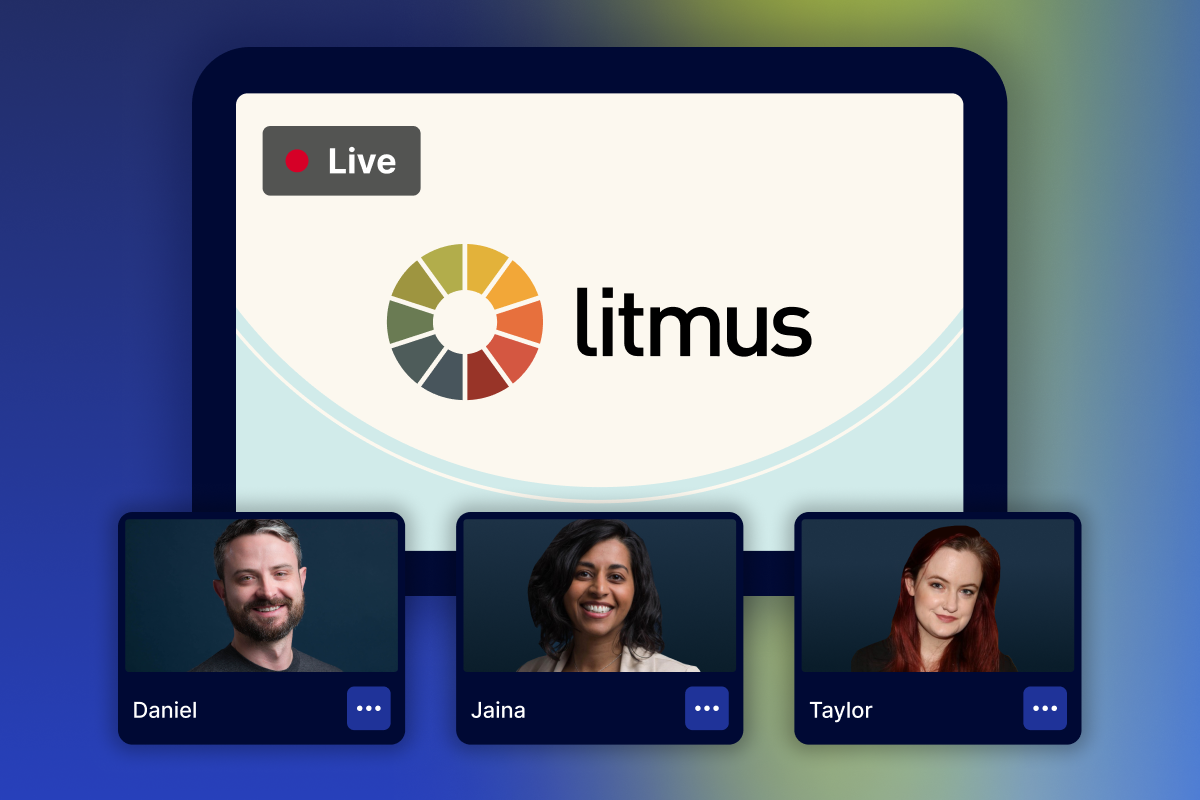The Definitive Video Production Glossary of Terms
Learn all the terms you need to know for every stage of video production.
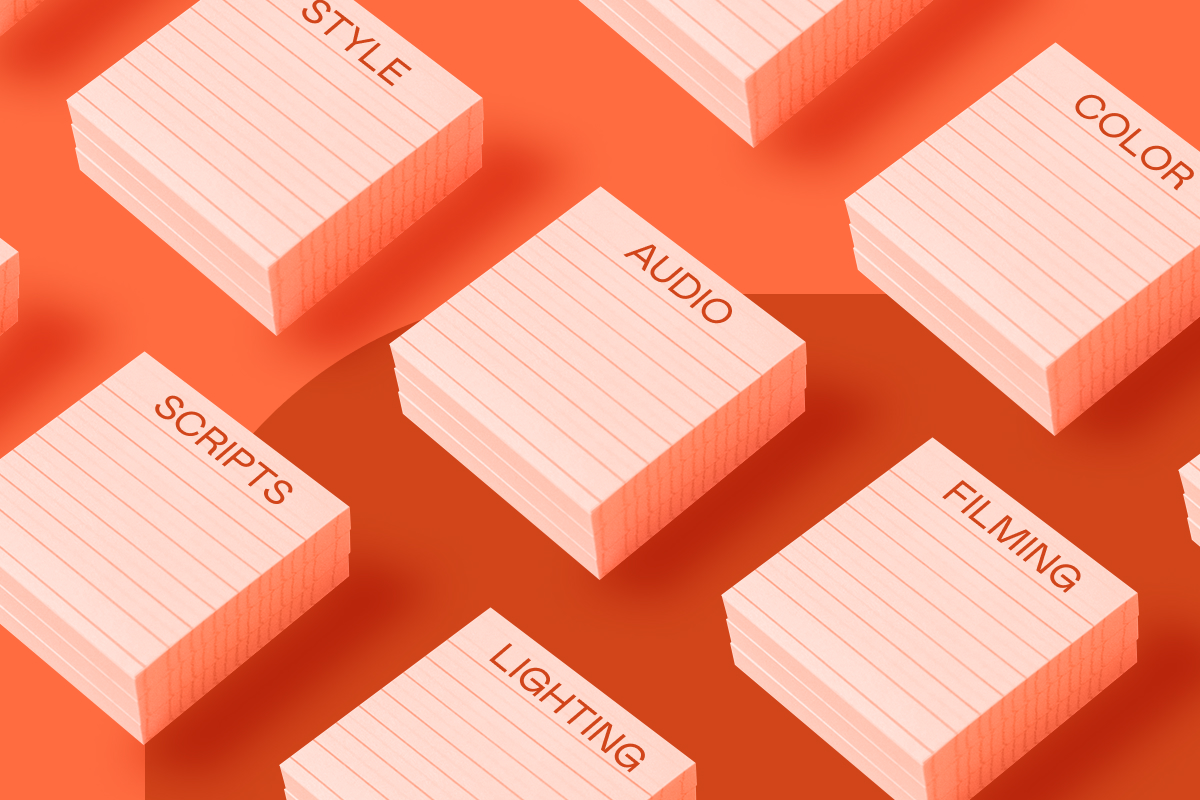
We get it: Video production might seem overwhelming with all the steps and jargon involved. That’s why we’ve put together this glossary of must-know terms for each stage.
Pre-production
Blocking
The process of planning the movements of actors or elements within a shot
The director works with the cinematographer and sometimes the talent to decide where everyone will stand, when they’ll move, and how they’ll interact with the camera. They often use rehearsals or sketches to map everything out.
Concept
The original idea, premise, theme, or vision for the video
The concept guides and shapes the script, visuals, key messaging, and overall style of the video.
Dialogue
The words the actors say to each other or the camera
The scriptwriter creates the dialogue while writing the script, and the director decides how the lines should be paced and delivered.
Framing
The way actors and elements are positioned within the shot
The director decides on the framing to set the mood and guide the viewer’s focus. They think about things like composition, camera angles, depth, and spacing.
Greenlight
Formal approval to move forward with a proposed video project
The greenlighting process varies by business. Some have one person responsible for approval, while others hold greenlight meetings where a group of stakeholders reviews and evaluates proposals.
Location
The physical setting where the video is filmed
A location could be indoors, outdoors, or in a studio.
Pacing
The speed and rhythm of a video or scene
Pacing is measured by the timing of cuts, dialogue, and actions in a scene. Fast pacing creates excitement or urgency, while slow pacing builds suspense or allows time for reflection.
Shot sequence
A group of shots working together to create a specific effect in a video
Documents outlining a shot sequence often include details like framing, actors, and location to provide a clear starting point for videographers. They also serve as helpful guides for shooting with the final edit in mind.
Storyboard
A visual plan for a video made up of drawings that show each shot in order
Similar to a comic strip, a storyboard breaks the video into panels with sketches of key moments and notes about camera angles, actions, and dialogue. It helps the team visualize the flow of the video before production begins.
Studio
An indoor space dedicated to producing videos
A studio is typically a single room with cameras, lights, audio equipment, and acoustic panels. It may also include backdrops, props, and green screens to create different settings.
Table read
An organized read-through of a script by all the actors with speaking parts
Most people directly involved in the production — actors, producers, directors, etc. — attend table reads. Those sessions give everyone an initial feel of the video’s flow and pace.
Production: General
Director’s cue
A signal the director gives to guide the cast and crew during filming
Common cues include:
- Action: “Start performing the scene.”
- Cut: “Stop performing; we’re done with this take.”
- Go again: “Start the scene over for another take.”
- Keep rolling: “Continue recording, even if there’s a small mistake or adjustment.”
- Moving on: “This shot is complete; we’re moving to the next one.”
- Places: “Cast and crew, take your positions and get ready for the next shot.”
- Quiet on set: “Everyone, be quiet so we can start recording.”
- Roll sound: “Start recording audio.”
- Roll camera: “Start recording video.”
Mark
A designated spot for an actor to stand on or move to during a scene
Marks are usually gaffer tape or colorful marking tape on the floor laid down by someone from the lighting crew.
Rule of thirds
A composition guideline that divides the frame into nine equal parts using two horizontal and two vertical lines and suggests that points of interest should be placed along these lines or their intersections
This helps create a more balanced and engaging visual. Many cameras, including iPhone cameras, offer an optional grid overlay in their settings to make it easier to apply the rule of thirds when framing a shot.
Shot
An uninterrupted piece of camera footage
Common types of shots and camera movements include:
- Aerial shot: Taken from an elevated perspective to provide a bird’s eye view of a scene, often captured using drones, helicopters, or cranes
- Close-up shot: Features a subject from a close distance and usually focuses on details like a person’s face or a specific object
- Crane shot: Taken from a large, movable arm (or crane) that moves the camera high in the air or across a set
- Dolly shot: Taken from a camera that’s mounted on a moving dolly
- Medium shot: Features a subject from the waist up; often used for dialogue scenes
- Over-the-shoulder shot: Taken from a position behind a subject and directed at the scene or other actors
- Pan: A horizontal camera movement where the camera moves left and right
- Point of view (POV): Shows exactly what the subject is seeing from their perspective
- Pull: A camera move where the camera moves away from a subject
- Push: A camera move where the camera moves toward a subject
- Tilt: A vertical camera movement where the camera moves up and down
- Wide shot: Shows a subject within a large area of the scene and captures more of the surroundings to provide context
- Zoom shot: Adjusts the camera lens to move closer to or farther from the subject without physically moving the camera
Strike
The process of dismantling a video set after the production is complete
This includes breaking down props, lighting, and equipment and packing everything for transport.
Teleprompter
A software application that shows a script in a clear, scrollable format at the top of a computer screen
It’s especially useful for presenters recording videos with a webcam because it lets them read the script while maintaining eye contact with the camera.
Video release form
A legal document used by businesses to get permission from the individuals being featured in their videos to use their likeness and voice for marketing purposes
Video release forms should be signed before filming, and they protect both the business and the individuals involved.
Production: Camera
Camera
A device that captures visual footage
Cameras can vary in type, capabilities, and formats. Some popular types of cameras businesses use in video production include DSLR cameras, smartphone cameras, and webcams.
Aperture
The adjustable opening in a camera lens that controls the amount of light that enters the camera
Adjusting the aperture helps balance exposure and achieve the desired visual effect. Aperture is measured in f-stops. Lower numbers let in more light and blur the background, and higher numbers let in less light and increase focus across the frame.
Aspect ratio
The proportional relationship of a video’s width to its height
Here are some examples of typical aspect ratios used in video production:
- 16:9 (widescreen): typically used for video and film production
- 1:1 (square): equal width and height
- Vertical: a taller height compared to the width; typically associated with social media videos
- Horizontal: a wider width compared to the height
Frame rate
The number of frames captured per second during video recording
It’s measured in fps (frames per second). Higher frame rates make motion look smoother, while lower frame rates can create a choppy or dramatic effect.
Gain
A camera setting that turns up the brightness without changing the exposure
It’s useful in low-light situations, but it can cause the image to look grainy or noisy if set too high.
Image stabilization
A camera feature that reduces blurriness caused by shaky movements
The camera uses either internal mechanisms or digital algorithms to achieve smoother, steadier footage.
ISO
A camera setting that adjusts the sensitivity of the image sensor to light
ISO comes in a number like 100, 200, or 400. Increasing the ISO brightens the image, while lowering it makes the image darker.
Lens
An optical device mounted on the camera that captures light and turns it into a clear picture
Some popular lenses for video production include:
- Prime lens: A fixed focal length lens that’s known for its high-quality images and better low-light performance
- Macro lens: A lens designed for capturing extreme close-up images with sharp detail
- Telephoto lens: A lens with a long focal length that brings distant subjects closer, compresses perspective, and isolates the subject from its background
- Wide angle lens: A lens with a short focal length that captures a wide field of view; great for landscapes and tight spaces
- Zoom lens: A lens with the ability to change focal lengths, allowing for framing flexibility and a range of perspectives
Matte box
An accessory attached to the front of a camera lens that shades the lens from glare and stray light
Matte boxes often include adjustable flaps called flags to block unwanted light from different angles. They can also hold filters that enhance the image.
Multicamera
The use of multiple cameras to capture various shots or angles of a scene at the same time
This setup allows editors to easily switch between different perspectives to create a more dynamic and engaging final cut. It’s especially useful for live events, interviews, or scenes with complex action.
Neutral density filter
A lens filter that reduces the intensity of light entering the camera without affecting the color balance
This allows filmmakers to shoot in bright conditions without overexposing the image.
Polarizing filter
A lens filter that reduces glare, enhances colors, and increases the contrast in the image
It’s particularly effective for cutting reflections from water, glass, or shiny surfaces and making skies appear deeper and more vibrant.
Shutter speed
The amount of time the camera’s shutter stays open to let in light for each frame
If you’re filming in a dark location, you can lower the shutter speed to let in more light and brighten the image. If you’re in a bright location, increase the shutter speed to reduce light and prevent overexposure.
Tripod
A three-legged stand used to steady and position a camera
Many tripods come with adjustable legs and a rotating head for versatile camera angles and heights.
White balance
A camera setting that adjusts the color temperature so white looks white and other colors stay accurate
By matching the camera to the lighting conditions (whether it’s sunlight, indoor lighting, or shade), this keeps colors looking natural and realistic in your videos.
Production: Audio
Ambient sound
The natural background noise in a scene or location
While it can add atmosphere or realism to your video, it can also interfere with dialogue or other audio if it’s too loud or distracting.
Microphone
A device that captures sound
The most common mics used for video production include:
- Boom microphone: Mounted on a handheld pole to capture sound from a distance
- Cardioid microphone: Picks up sound from the front and isolates ambient noise, a top choice for podcasters
- Lavalier microphone: Clips to clothing for hands-free use, ideal for TV and interviews
- Omnidirectional microphone: Captures sound evenly from all directions, perfect for live music and ambient sound
- Shotgun microphone: Isolates sound from a specific area, great for dialogue in videos
Windscreen
A protective screen for microphones
A windscreen reduces noise from wind and other external influences.
Production: Lighting
Backlight
A light source that illuminates an actor or set piece from behind
This helps make the subject stand out against the background.
Bounce lighting
A technique of reflecting a strong light source off a surface (usually a whiteboard or reflector)
This softens the light and helps reduce harsh shadows. It’s often used for interviews, portraits, and other scenes where soft lighting works best.
C-47
A clothespin used to position filters or gels on lights
Once considered a joke to confuse rookies on set, C-47 became a film industry term for a clothespin.
Diffusion
The use of a translucent material to scatter light
This results in a soft light without harsh shadows.
Fill light
An additional light source placed on the opposite side of the camera from the key light
It reduces the harshness of shadows created by the key light.
Flag
A flat, opaque object used to block or shape light on a film set
It’s placed between the light source and the subject to create shadows, reduce glare, or prevent light from spilling onto areas where it’s not wanted.
Gel
A colored sheet that alters the color output of light sources
A gel is attached to the front of a light. Fun fact: Pink gels can reduce the look of wrinkles on actors!
Hard light
Direct, unmodified light that creates strong, well-defined shadows
Hard light is often placed close to the subject for dramatic effect or farther away to emphasize texture and detail. It’s commonly used for bold, high-contrast looks in scenes that require a sense of intensity or mystery.
Key light
The primary light source that illuminates the actor, prop, or areas of the set
The key light is the foundation of most lighting setups and works alongside other lights, like fill and backlights, to balance the overall look.
Natural light
Light produced by the sun as opposed to artificial light sources
It’s free and versatile, making it a favorite for outdoor shoots, but it requires careful planning to adapt to weather and time constraints.
Practical lighting
Light sources that are actually visible in the shot
These include lamps, fireplaces, candles, and neon signs. Practical lighting adds realism and mood to a scene, but it often needs to be supplemented with off-camera lights to create proper exposure and balance.
Three-point lighting
A standard lighting method with three primary sources: key light, fill light, and backlight
This setup is versatile and widely used in film and photography to create a balanced and professional look.
Production: Miscellaneous gear
C-stand
A portable frame that holds a variety of production equipment
C-stands come in various weights and sizes, and they typically hold lights, diffusers, or reflectors.
Clapperboard
A flat board with a hinged clapstick at the top used to mark the beginning of a shot
A clapperboard displays key details like the scene, shot, and take number. It helps the crew stay organized and makes it easier for editors to match audio and video during post-production.
Gaff tape
Durable, heavy-duty tape used for securing equipment, marking areas, or other special needs on set
Unlike duct tape, gaff tape doesn’t leave sticky residue, making it safe for use on equipment and surfaces. It’s a must-have for video crews to secure lights, props, or set pieces and to mark positions for actors or equipment.
Green screen
A solid green background used during filming with the purpose of being digitally replaced with another background during post-production
Editors use chroma key technology to isolate and remove the green color and replace it with any backdrop they want.
Post-production
A-roll
The main footage or primary shots in a video project
It serves as the backbone of the video, with other elements like B-roll or graphics used to support and enhance it.
Background noise
Unintentional audio that may interfere with the primary audio elements
Examples include crowd noise, wind, or traffic sounds.
B-roll
Supplementary footage in a video project
B-roll adds context, covers cuts, or makes the main story more engaging. You can shoot your own B-roll or buy stock footage online.
Color grading
The process of adjusting the appearance, colors, and tone of a video in post-production
It helps set the mood and style by making the shots look warmer, cooler, or more vibrant.
Dubbing
The process of replacing or adding dialogue to a video after it’s been filmed
Dubbing is often used to translate dialogue into different languages, correct errors, or improve audio quality. Modern tools like AI voice generators make dubbing more efficient.
Editing software
A computer program designed for video editing
Editing software can be online or offline and is used to cut, arrange, and enhance video footage.
Fast motion
A video effect that speeds up the playback of footage to create a sense of rapid action
This effect is often used to show the passage of time or to add energy and humor to a scene.
Lookup tables (LUTs)
Predefined color presets applied to video footage
LUTs are used in color grading to quickly achieve a specific look or mood, such as making footage appear warmer, cooler, or more cinematic.
Master track
The final audio mix with all the individual audio elements combined and balanced for optimal playback
All audio levels — dialogue, music, and sound effects — are blended together. The master track is exported as the final version used for distribution.
Motion tracking
A technique that tracks the movement of an object or scene element through sequential frames
Motion tracking is often used to add effects, text, or objects that follow the movement of something in the video. It’s popular in visual effects and augmented reality.
Overlay
An element or graphic placed on top of a video clip or image to create a layered effect
Common overlays include text, logos, images, or animations that enhance the visuals or convey extra information.
Raw footage
Original, unedited video clips captured by the camera
Raw footage is the starting point for any video project. It’s typically refined through editing to create the final video.
Slow motion
A video effect that slows down the playback of footage to emphasize actions or emotions
Slow motion is often used to highlight dramatic moments, add suspense, or create an artistic effect. It’s achieved by recording at a higher frame rate and then playing the footage back at a normal speed.
Sound effects
Audio clips that match or enhance actions and settings in a video
Sound effects, like footsteps, explosions, or background noises, make scenes more realistic or dramatic. They can be recorded for a project or sourced from pre-made libraries.
Special effects
Techniques used during filming to create visual illusions or enhance on-screen action
Special effects include practical methods like pyrotechnics, props, or makeup, as well as in-camera tricks like forced perspective. They’re often used to create elements that can’t exist naturally, such as explosions, monsters, or fantasy environments.
Split screen
An effect that shows two or more videos on the screen at the same time
It’s used to compare scenes, show different perspectives, or display multiple actions happening at once.
Timeline
The workspace in video editing software where you arrange video clips, audio, and effects
The timeline helps you organize and layer footage to perfect the flow of your project.
Transition
A visual effect in video editing that connects two clips or scenes smoothly by changing how one ends and the next begins
Common transitions include:
- Cut: A quick switch from one clip to the next
- Cut-in: A close-up shot added between wider shots to highlight a detail or moment
- Dissolve: One clip fades out while the next fades in at the same time
- J-cut: The sound from the next clip starts before its video appears
- Jump cut: A sudden change between similar shots to show time skipping or create a jarring effect
- L-cut: The sound from the current clip continues playing after the video switches to the next
- Wipe: One clip replaces another through a moving graphic or pattern that sweeps across the frame.
Voiceover
A recorded narration that plays over the visuals of a video
Voiceovers are often used to explain, guide, or add emotion to a story without showing the speaker on screen.
